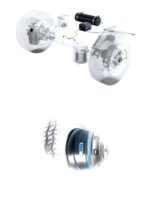The pressure on the industry is growing: fleets must be comprehensively renewed and vehicle manufacturers must increasingly use particularly sustainable transport solutions. With Regulation (EU) 2019/1242, CO₂ fleet target values were introduced for the first time for commercial vehicles in vehicle classes N2 and N3:
- CO₂ emissions per km must be at least 15% lower from 2025 than in the base year 2019/2020.
- Revision of the CO₂ fleet targets in the coming year, tightening of the target values is considered likely.
- Assessment basis is the Vehicle Energy Consumption Calculation Tool (VECTO)
Innovative trailer technologies from the BPW Group are already contributing to greater sustainability - and doing so particularly economically:








